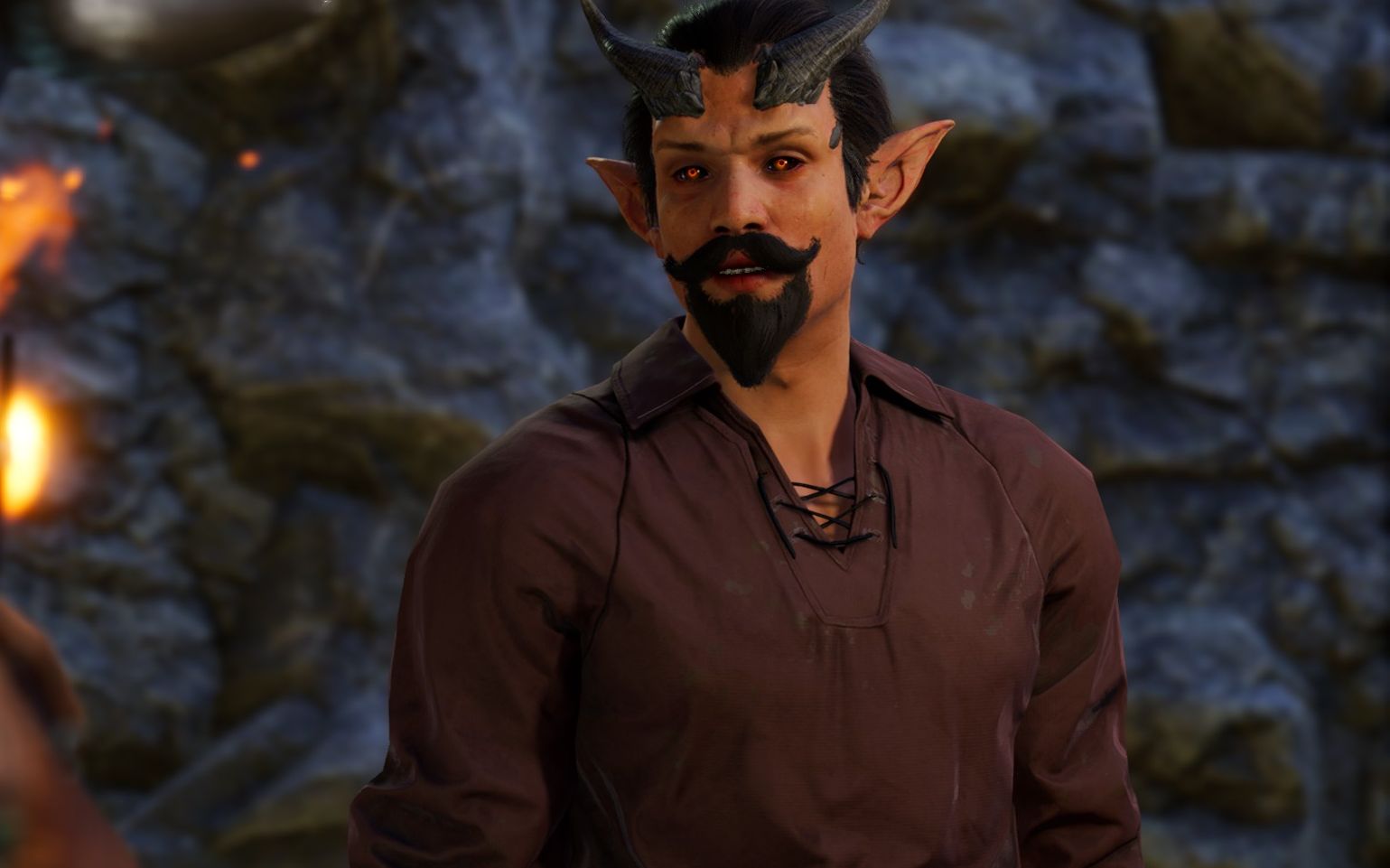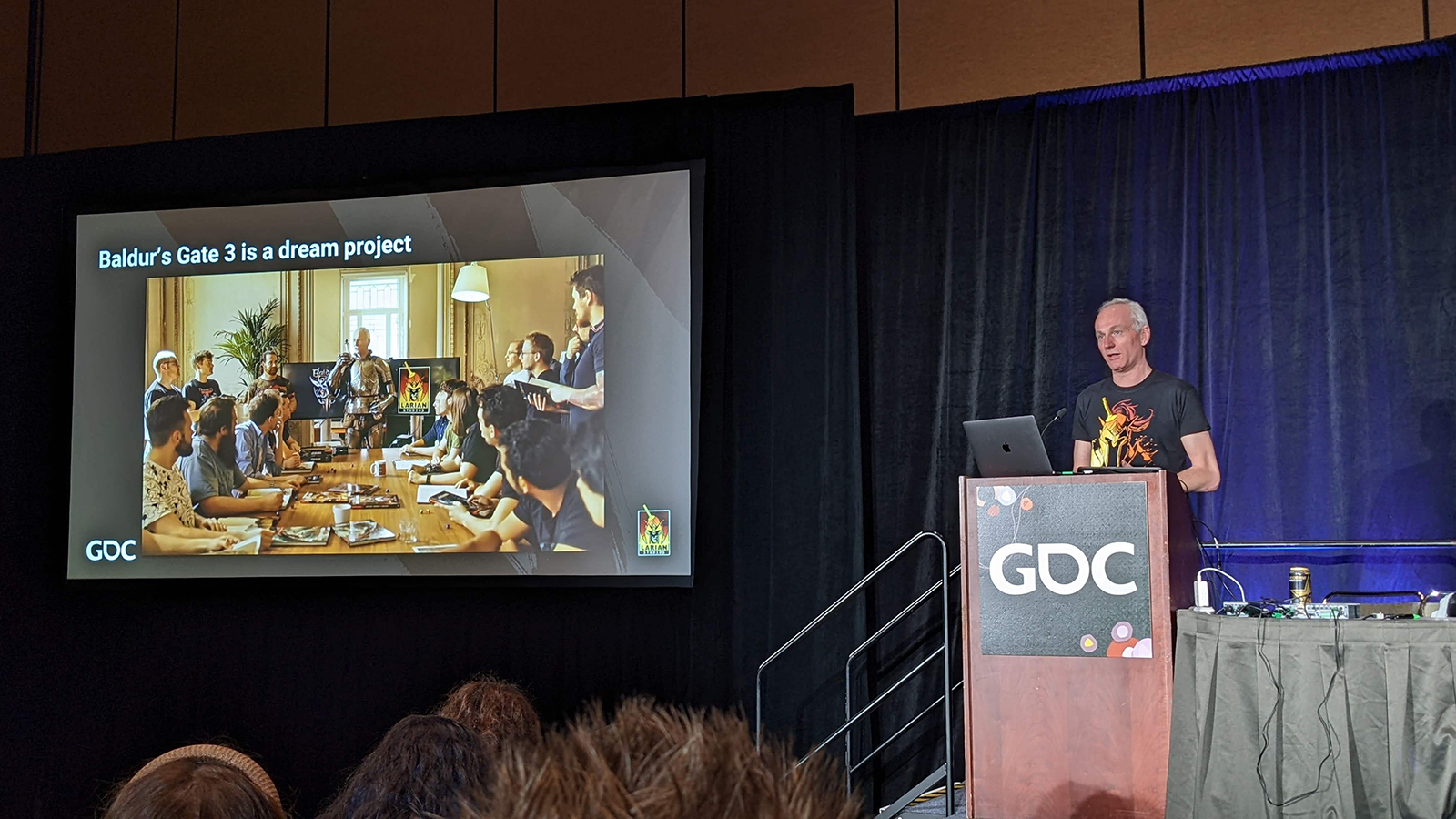Larian's Baldur's Gate 3 team is 10 times bigger than when it made Divinity: Original Sin
The studio chose to scale up instead of scaling down its vision, which it calls 'the benchmark incarnation of D&D 5th Edition.'

Larian Studios always goes all-in. After nearly bankrupting itself to make Divinity: Original Sin, Larian tripled in size to pull off an ambitious sequel, growing to around 150 developers. With one of the best RPGs of the decade under its belt, Larian then set out to make Baldur's Gate 3. A year in pre-production let them build out estimates of how much work this even more ambitious game would take, hiring developers to work on fancy cinematics Divinity didn't have. "We thought we had it all figured out. We even estimated how big we'd have to become," said Larian founder Swen Vincke.
They were wrong.
"I never expected us to be 400 people to make BG3," Vincke told me. "Nobody expected it. But it's literally what we needed to do it. We had a choice. There was a moment where we started understanding what we needed to do to make this game. We thought we understood. Then we actually really understood. And so we had two choices: we could scale it down, or we could scale ourselves up. And so we chose to scale ourselves up."
I asked Vincke where he thinks BG3 fits within the broader D&D landscape, in all its forms, and the answer came easily. "The benchmark incarnation of 5th Edition in a videogame," he said. "That's what we're trying to do. I think it's already very good, and it's still getting better."
We've never been about the money.
Larian founder Swen Vincke
The growth for Baldur's Gate 3 means Larian is nearly 10 times the size it was in 2014 making Original Sin, now spread across 7 studios around the world. Cinematics were a huge complicating factor that affected everything else in the game, even dramatically impacting the writing process. On Original Sin 2, the writers could tinker with text until essentially the last minute, thanks to an automated pipeline they built that would send new text straight to the recording studios for actors to record the next day. But that doesn't work when every dialogue scene is meticulously animated—writing has gone from one of the first steps in the process to one of the last.
"There are so many steps in between now, so many people that need to look at it," Vincke said. "Cinematic designers, cinematic animators, the casting director, lighting, VFX, SFX. So you don't just add a line like that anymore. You're very aware of your cinematic budget, the cost, and the waterfall that follows from it. We've had to reinvent ourselves, how we work… so that we can still iterate."

I asked Vincke if the growth is risky, thinking back to Larian dancing on the edge of bankruptcy to make Original Sin. Of course it is, he said. But based on Larian's track record with the Original Sin games, I also believed him when he said: "We've never been about the money."
The biggest gaming news, reviews and hardware deals
Keep up to date with the most important stories and the best deals, as picked by the PC Gamer team.
"I guess a lot of people say that, but it's really about what we need to make this game. I would literally have a revolution inside of my company if I forced them to lower their aspirations, the things they want to do. They're really proud of Baldur's Gate 3. They really want to reach the ambition that they have, because they all played Baldur's Gate 1 and 2 in their youth. This is a very important project for them. I'm happy we're doing it this way, because I think it deserves it, and we have the means of doing it because of the success of the previous games. I would not have wanted it to be a game that had to be scaled down."
Larian's currently working on Baldur's gate itself, building out the city, and also filling out D&D's spell library and implementing its remaining classes. Then there's time-consuming polish, which is why he announced that Baldur's Gate 3 won't be fully finished until 2023.
"This is a very specific niche of game where you have a lot of narrative with a lot of systems coming together," he said. "If your agency is [limited], you're guided down the routes, you're not gonna be happy when you're playing it. It breaks the entire thing. The problem is the only alternative is just, fuuuuck, you need to cover it all. But we figured it out, and we're doing it.
"There were really lots of easy cuts that we could've done. But then it wouldn't have been the game that it needs to be. We're not going to release it if it's not ready. It's going to be quite the thing, you know. When you go to the character creation and you can select all those classes, all those sub classes, and then you start that journey—knowing everything you can do on that journey, it's going to be quite the thing."

Wes has been covering games and hardware for more than 10 years, first at tech sites like The Wirecutter and Tested before joining the PC Gamer team in 2014. Wes plays a little bit of everything, but he'll always jump at the chance to cover emulation and Japanese games.
When he's not obsessively optimizing and re-optimizing a tangle of conveyor belts in Satisfactory (it's really becoming a problem), he's probably playing a 20-year-old Final Fantasy or some opaque ASCII roguelike. With a focus on writing and editing features, he seeks out personal stories and in-depth histories from the corners of PC gaming and its niche communities. 50% pizza by volume (deep dish, to be specific).

